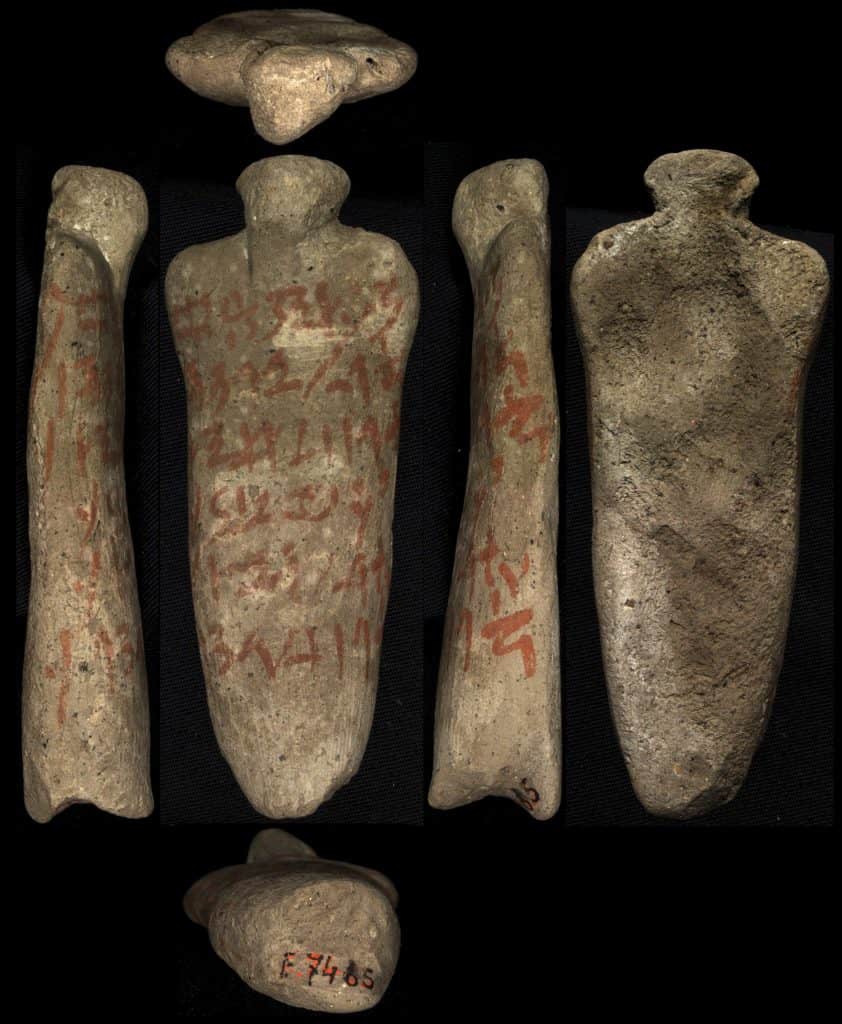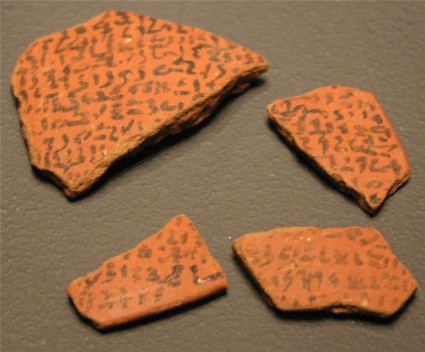Execration texts are ancient Egyptian hieratic texts, a listing of enemies of the Pharaoh. Most often enemies of the Egyptian state or troublesome foreign neighbors. The texts were often written upon statutes of bound foreigners; bowls or blocks of clay; or stone; which subsequently destroyed. The ceremonial process of breaking the names and burying them was intended to be a sort of Sympathetic Magic that would affect the persons or entities named in the texts. The fragments were usually placed near tombs or ritual sites. This practice was most common during times of conflict with the Asiatic neighbors of Egypt.

Credit: U0045269, CC BY-SA 4.0, via Wikimedia Commons
The Egyptian Execration Texts: Their Ritual
The execration ritual was how one could thwart or eradicate one’s enemies. Usually, the ritual object(s) would be bound (usually a tiny figurine, but sometimes human sacrifice was practiced). Then the object was smashed; stomped on; stabbed, cut; speared; spat on; locked in a box, and finally buried. But not every execration included all of the previous components. A complete rite could use any of these actions numerous times with numerous figures. One recorded ritual instructed, “spit on him four-time..trample on him with the left foot… smile him with a spear…slaughter him with a knife… place him on the fire… spit on him in the fire many times.”

Credit: Naunakhte, CC BY-SA 3.0, via Wikimedia Commons
The Egyptian Execration Texts and The Land of Israel
The presence of foreign names of cities and tribes has long been a source for researchers to learn more about the dates and influences of these sites. When the first two groups of Execration Texts were published, archeologists saw that the texts contained numerous mentions of Canaanites and Phoenicians’ cities. The Egyptian Execration Texts are the first documents to provide data on the geography of the land of Israel during the twentieth and nineteenth centuries BCE. These are texts written on clay figurines in the form of slaves with their hands bound. The names and the rulers of cities of the country were inscribed on them
Two groups of the Egyptian Execration Texts have been discovered: the earlier writings, dating to the twentieth century BCE, were written on clay bowls, and the later texts, from the nineteenth century BCE, were inscribed on figurines. In the early group, mention is made of several cities and the names of several city rulers. In the later inscription, the number of rulers of each city. Inscriptions that are dated later, the number of rulers is reduced to one or two.
Cities Mentioned in the Egyptian Execration Texts
The Execration Texts refer to two cities in the mountain region of the land of Israel. One of them is Jerusalem. Only Jerusalem is referred to in both groups of inscriptions, but both these cities had an important status in the region. Archaeological excavations have not revealed finds which could stress the importance of the city during the period referred to in the Execration Texts. It would appear that the remains from those periods were destroyed during the building that went in the Middle Bronze Age IIB (eighteenth century BCE).
In the photograph above, you can see a clay figurine from Sakkara, Egypt, from the nineteenth century BCE (the latter group of the Execration Texts), with curses inscribed. The Egyptian priests used the figurines as magic to counter the uprisings of the cities. When a revolt against Egyptian rule broke out, the priests would break the figurine on which the name of the rebellious city was engraved. In the belief that the spirit of the revolt would thus be broken.

